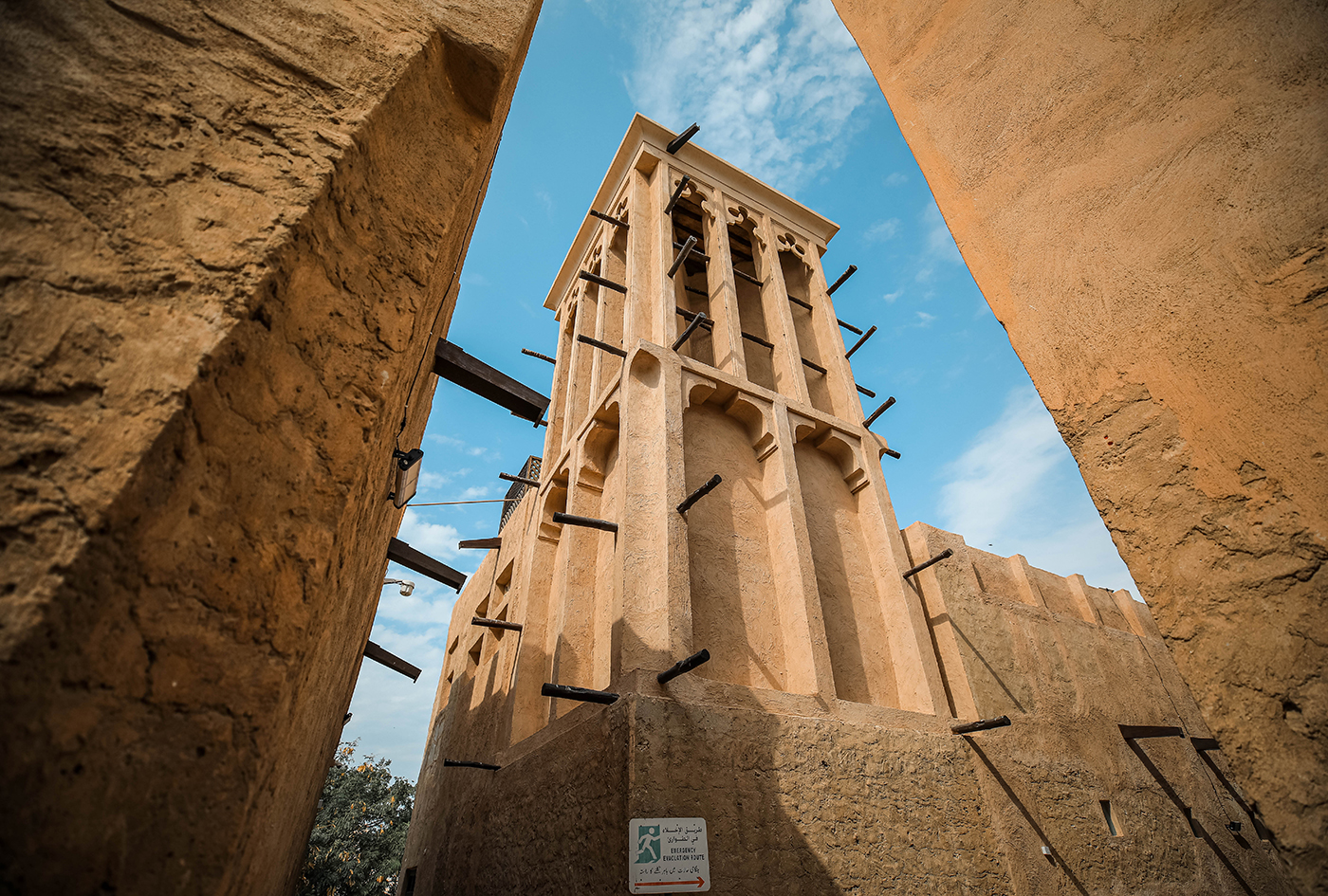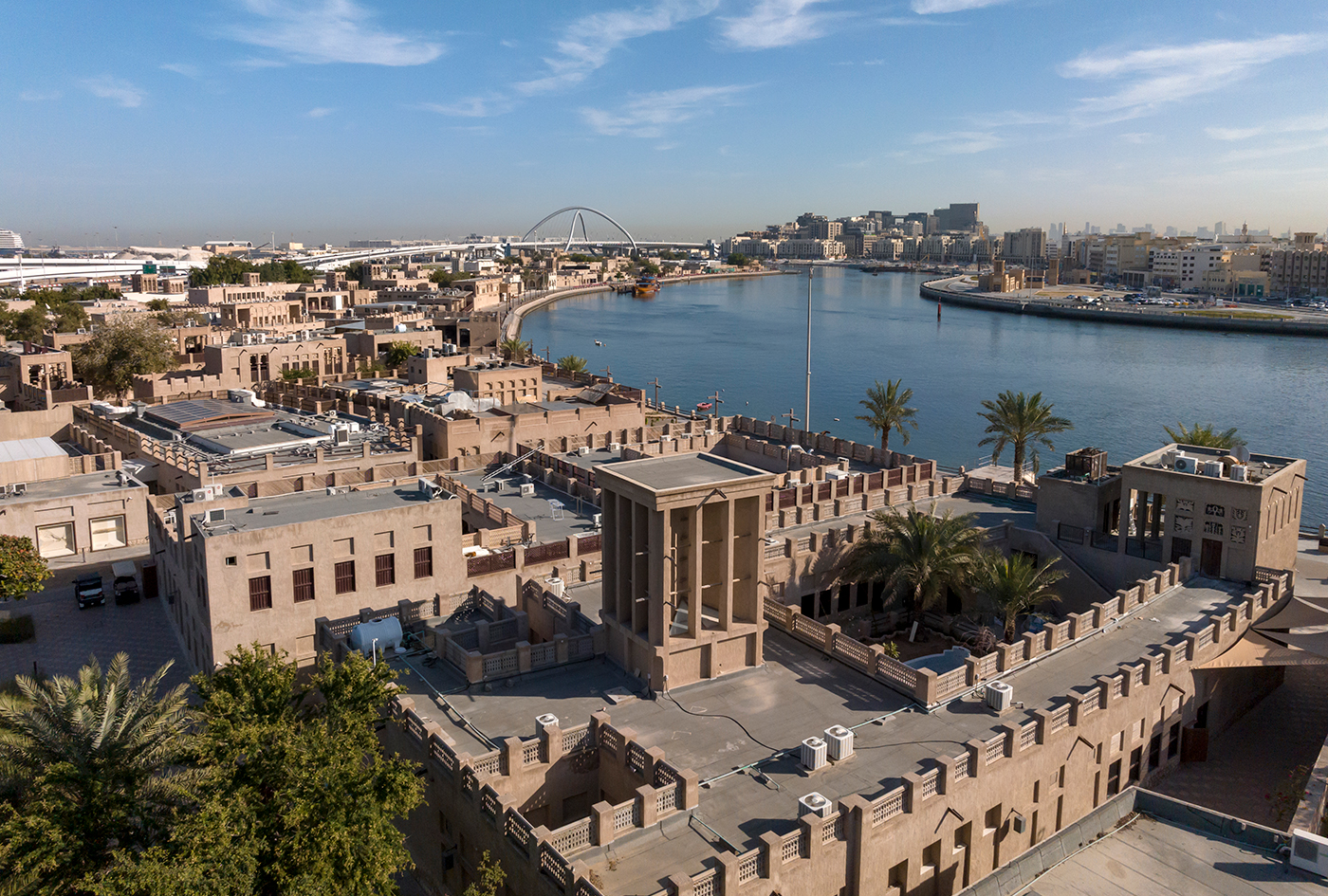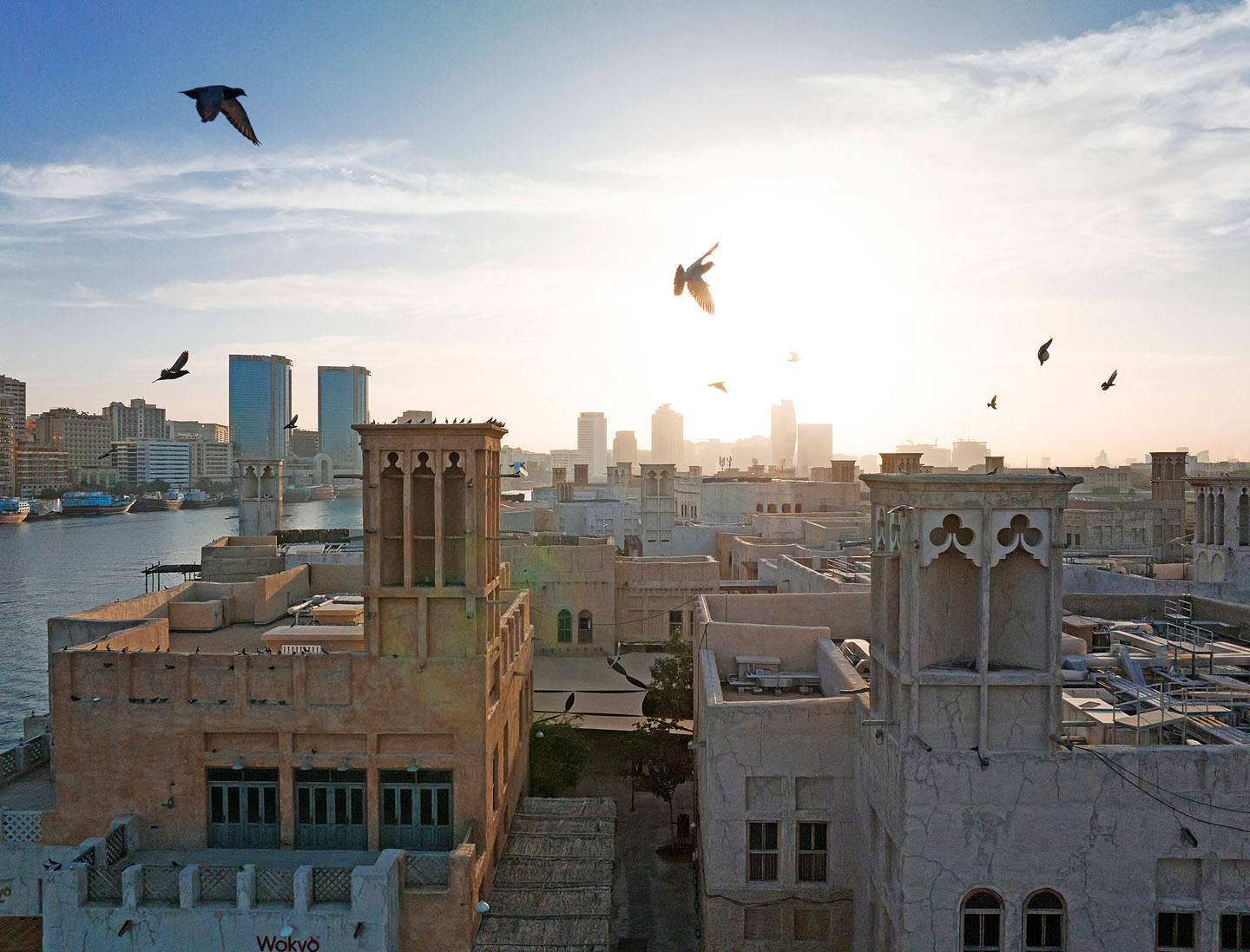Vancouver is now only a direct flight away from Dubai on a new seasonal route from Air Canada, restarting October 28. Read more Dubai travel stories.
The glittering towers and minarets of modern Dubai may crowd the horizon, but as I look upward through a whitewashed gypsum interior, I see only a triangle of pale blue sky. Outside, the temperature is rising to 32 degrees, even in late October, but inside the air is still, earthy, and surprisingly cool.
The house in which I am standing, occupied until the 1970s by an Emirati merchant family, is tucked into the narrow streets of one of the oldest neighbourhoods of Dubai, near the banks of the saltwater creek that forms the heart of the city. The Al Fahidi district is named for the fortress that overlooks it, the oldest surviving structure in the city, built three decades before the House of Maktoum arrived from Abu Dhabi in the early 19th century to found the dynasty that still rules today. At that time, most residents lived in simple palm houses, barastis, the easily constructed summer dwellings of a semi-nomadic people.
The houses in Al Fahidi, however, are larger, more permanent, and constructed with a remarkable array of ancient technologies that make comfortable city-living possible, even in the scorching heat of Dubai. Iranian traders, moving across the Persian Gulf from the city of Bastak 250 kilometres north, settled near Dubai Creek in the midst of the city’s late-19th-century pearl-diving boom, giving the neighbourhood its other name—Al Bastakiya. They brought with them architectural techniques adapted to the southern deserts of the Persian plateau and melded them with local materials, creating a unique form that would become the distinctive traditional architecture of the city—the coral houses of Dubai.
First there is the material itself that gives the houses their name. Collected from the pearl beds and beaches, coral—the intertwined calcium carbonate exoskeletons of tiny marine invertebrates—is lightweight and porous, an ideal natural insulator. Walls in the houses can be up to 30 inches thick, with small doorways and few exterior windows, a shell to keep out the heat. High and narrow alleyways between buildings keep the sun off except in midday, and on some exposed street corners the coral bricks peek through, a palette of natural textures from honeycomb to brain-wrinkled to sponge. To preserve the delicate coral beds, my guide explains, harvesting the material was outlawed in 1971, shortly before half of Al Bastakiya was destroyed to make way for modern high-rise buildings.

Inside, the details of the house are designed both to match the desert climate and the requirements of the closely knit local culture. The centre of the house features an open courtyard with palm trees for shade, and space for communal gatherings, eating, and greeting guests. Wooden screens allow airflow throughout and are carved in fantastical scenes—though avoiding depiction of humans or animals to respect the Islamic prohibition against praying in the direction of anything with a soul. Low lintels keep out the sun and force unexpected visitors to stoop briefly, giving the women of the house a moment to cover their hair.
The pinnacle of the ingenuity of the coral houses, however, is in the room in which I am standing—a square turret surrounded on the outside by exposed wooden beams. This is a barjeel, or wind tower, an air-conditioning system that requires neither electricity nor coolant fluid. When the towers were active, ocean breezes would pass over the building, the wind collected by one face of the tower, then redirected down into the house through sheets of wet cloth hung on the beams. As the water evaporated, it further cooled the air—the same essential thermodynamics as in a modern air conditioner. Hot air naturally rises and exits through the downwind face of the tower.
“But the barjeel is much more than an architectural tool; in early Dubai it became a symbol of luxury, prestige, and power.”
Long before passive architecture became a buzzword in contemporary cities, wind towers used the natural energy of sun and wind to keep indoors as much as seven degrees Celsius below outdoor temperatures. Today, now that Dubai’s modern buildings run on electrically powered air conditioning, the wind towers of Al Bastakiya stand bare, their wooden beams sticking out like the quills of stucco hedgehogs.

In the Al Bastakiya neighbourhood, narrow alleyways and high walls ward off the sun for most of the day.
But the barjeel is much more than an architectural tool; in early Dubai it became a symbol of luxury, prestige, and power. Directly underneath the wind tower was the coolest part of the house, and the structures—often built with precious chandal wood imported from as far as Kenya or India—meant the height of comfort. The palace built on Dubai Creek by Sheikh Saeed Al Maktoum, who helped transform Dubai from pearling port to trade hub in the early 20th century, boasts four wind towers. What the Burj Al Arab is to the skyline of modern Dubai—a symbol of opulence and economic success—the wind tower was to the early city.
Much of today’s Dubai is like the Burj Al Arab or its sky-piercing sister Burj Khalifa—relentlessly modern, international, future-oriented, and wrapped in steel, glass, and concrete. But underneath the surface, an older city with its own culture, traditions, and connection to its natural environment still lives.
Travellers to Dubai are tempted by glittering international attractions: shopping malls full of fashion from London and Paris, cuisine from Asia to South America, and coffee shops and arts venues that could be plucked from Portland or Brooklyn. But it is also possible to travel to a distinctive Dubai, walking through the old markets that have made the city a trading hub for centuries, travelling into the desert to see the homeland of the city’s Bedouin founders, or walking through the architecture that made life in early Dubai not only possible but also comfortable.

The surviving coral houses of Al Bastakiya are now protected by Dubai’s government, many of them carefully restored (a project that was prompted, in part, by no less than King Charles, then Prince of Wales, on a visit in the 1980s.) The building I visit has its courtyard covered for preservation, and is used to introduce visitors to the culture of Dubai through the Sheikh Mohammed Centre for Cultural Understanding, an organization that serves traditional meals and answers questions about everything from local dress to women’s rights.
The coral houses are more than just museum pieces, however. As Dubai faces a transition to renewable energy and the looming threat of higher temperatures, researchers in the Emirate have begun to study the buildings as an inspiration for adaptive, climate-friendly architecture. As a legacy of Dubai’s melting pot of commerce, culture, adaptation, and tradition, they symbolize not just its past but also possibly its future.
Read more from our Summer 2024 issue.









